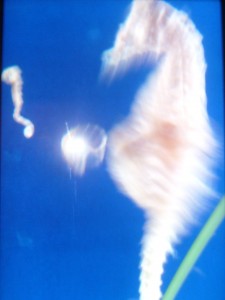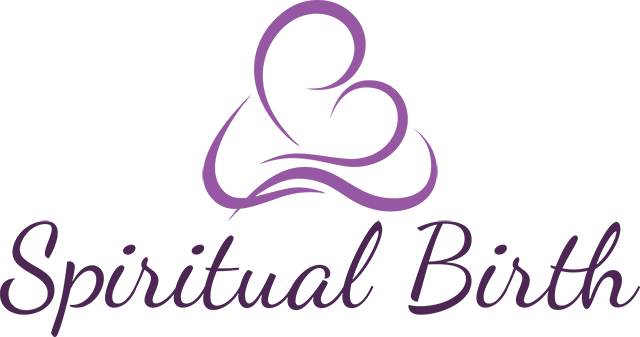How does a midwife explain a slow labour or a long ‘second stage’? The fact that a woman may be fully dilated does not mean she is ready to expel her baby from the womb. Midwives and obstetricians make this mistake all the time, as if the woman were a mechanical engine that should fire it’s pistons at the turn of a key.

I recently had a client who laboured slowly. Her 2nd stage was prolonged though not obstructed; the fetal heart never once faltered and we protected this mother’s autonomy to give birth her way. This mother had been sexually abused as a child, and needed the time to accustom herself to the strong sensations in her pelvic area and to realise that they were not associated with any kind of abuse. We were very gentle with her; she was empowered by our patience and encouragement and gave birth spontaneously to a healthy baby boy.
The point is, that full dilatation of the cervix does not mean the mother is ready to push or that the baby is ready to be born, as long as the fetal heart is stable and reactive. The idea that a woman should push when she is fully dilated came as a result of epidural anaesthesia, as a mother does not feel the urge to push due the the numbing of the whole pelvic area. Doctors subsequently used full dilatation to mark commencement of the second stage of labour.
A mother who is forced to push (coached pushing) tires more easily and is less able to recover in-between the contractions, as is her unborn child. Hence the increased incidence of forceps and vacuum deliveries with an epidural anaesthesia. A mother (without epidural) who follows the urges of her body may have a longer second stage and give birth to a baby with a good apgar score, equal to that of a baby born to a mother coached during a shorter second stage of labour. Coached pushing, along with routine amniotomy and continuous fetal monitoring, is used in the vast majority of hospital births.
Several studies conclude that supine (lying or reclining on your back) pushing is not beneficial and can even be harmful to the mother and the baby. It works against gravity and decreases blood pressure, which can lead to fetal exhaustion, increased episiotomy, increased use of vacuum/forceps, and increased pain for the mother.
Midwifery is both an art and a science and part of that art, in the present climate, seems to be to prevaricate in order to align ourselves with what obstetric theory advises we should be doing. I understand that with large numbers of women, protocols, systems and services need to be in place to ensure the safety of the general populace. Systems and protocols provide safe guidelines to follow in these situations but may preclude honouring those women who deviate from the norm.
Medical science does not teach that second stage only begins when the head descends on the pelvic floor, nor does it teach spontaneous expulsion of the baby. How does one teach, to midwifery and medical students alike, the difference between an obstructed labour or a mother who just needs time? When the fetal head is still high, even though a mother may be fully dilated, time should be given to allow descent of the head onto the pelvic floor. For some women this takes longer than for others. Pushing starts when the mother feels spontaneous urges, not when the midwife or obstetrician decides pushing should occur Having said all this, I fully recognise that mothers and babies may be at risk when labours extend way off the partogram, although this occurs often in over utilised and understaffed services or in rural areas, where mothers are young, malnourished, there is poor transport etc.
Another thing: students are not taught how to read the outward behaviour of women in labour, such as her facial expressions, body movements and sounds. Changes in behaviour during labour are clues to the experienced midwife as to the progress of labour. I remember approaching a patient who was clearly exhibiting outward behaviour that suggested she was close to spontaneous expulsion and the attending obstetrician was insisting on attaching a fetal scalp probe. I asked him to refrain and told him the woman was about to give birth. Soon after he left the room, she gave birth to a healthy baby.
Women need privacy, quietness, time and gentle encouragement to complete the second stage of labour spontaneously and birth their babies with their own efforts. This gives women enormous satisfaction and pleasure once the baby is safely in their arms.
Having said all of this, there is at times a need for much encouragement during the pushing stage, for example when a mother and baby have a tight fit. If mother or baby experience distress there may be a need for some kind of assistance or intervention. I am NOT suggesting recklessness and ignoring symptoms of obstructed second stage. While in the first world we have the luxury of debating these issues, in the third world babies and mothers die from lack of intervention due to long labours. Cephalo-pelvic disproportion in Africa is not a myth and while there may be numerous contributory factors such as poverty, malnutrition, stress, teenage marriages and teenage pregnancy, the fact remains that it occurs.
I found the following references for spontaneous pushing and position during 2nd stage labour, but these do not yet solve the problem of the length of time that can be allowed from full dilatation to expulsion of the baby during 2nd stage.
• Bloom, S., Casey, B., Schaffer, J., McIntire, D., & Leveno, K. (2006). A randomized trial of coached versus uncoached maternal pushing during the second stage of labor. American Journal of Obstetrics and Gynecology, 194(1), 10–13
• Mayberry, L. J., Wood, S. H., Strange, L. B., Lee, L., Heisler, D. R., & Nielsen-Smith, K. (2000). Second-stage management: Promotion of evidence-based practice and a collaborative approach to patient care. Washington, DC: Association of Women’s Health, Obstetric and Neonatal Nurses (AWHONN).
• Roberts, J., & Hanson, L. (2007). Best practices in second stage labor care: Maternal bearing down and positioning. Journal of Midwifery & Women’s Health, 53(3), 238–245.
• Schaffer, J., Bloom, S., Casey, B., McIntire, D., Nihira, M., & Leveno, K. (2006). A randomized trial of the effects of coached vs. uncoached maternal pushing during the second stage of labor on postpartum pelvic floor structure and function. American Journal of Obstetrics and Gynecology, 192(5), 1692–1696.
• Maresh, M., Choong K-H, Beard R.W. (1983) Delayed Pushing with lumbar epidural anaesthesia in labour. British Journal of Obstetrics and Gynaecology, Vol 90,pp623-627
• Gupta, J. K., Hofmeyr, G. J., & Smyth, R. (2004). Position in the second stage of labour for women without epidural anaesthesia. Cochrane Database of Systematic Reviews, Issue 4. Art. No.: CD002006. • Johnson, N., Johnson, V., & Gupta, J. (1991). Maternal positions during labor. Obstetrical and Gynecological Survey, 46(7), 428–434.
• Roberts, J., & Hanson, L. (2007). Best practices in second stage labor care: Maternal bearing down and positioning. Journal of Midwifery & Women’s Health, 53(3), 238–245.


How much was this woman’s neocortex operating?
Most recent birth of a first time posterior baby took 4 hours as mother put shawl over her head through most of her labour!
Wow Denise. That ‘s brilliant that your client was so instinctive and primal. And so good for her that she had a midwife who really understands that birth is a spontaneous involuntary process. Wonderful work you are doing!
Major follower of the blog, a number of your blogposts have really helped me out. Looking towards posts!